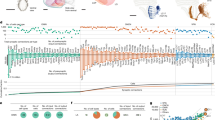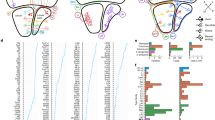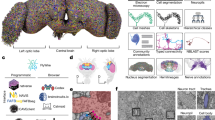
Overview
- Focuses on the interdisciplinary nature of modern neural circuit dissection: high-resolution anatomy, cellular activity, and behavioral dissection, to assign specific functions to identified, single neurons
- Compares the progress from vertebrate and invertebrate model systems, both of which provide important, and complementary insights into circuit function
- Summarizes the most recent work in a very rapidly evolving field: the use of genetic model systems that allow for the manipulation of neural circuits in vivo
- Includes supplementary material: sn.pub/extras
- Includes supplementary material: sn.pub/extras
Access this book
Tax calculation will be finalised at checkout
Other ways to access
About this book
This book offers representative examples from fly and mouse models to illustrate the ongoing success of the synergistic, state-of-the-art strategy, focusing on the ways it enhances our understanding of sensory processing. The authors focus on sensory systems (vision, olfaction), which are particularly powerful models for probing the development, connectivity, and function of neural circuits, to answer this question: How do individual nerve cells functionally cooperate to guide behavioral responses? Two genetically tractable species, mice and flies, together significantly further our understanding of these processes.
Current efforts focus on integrating knowledge gained from three interrelated fields of research: (1) understanding how the fates of different cell types are specified during development, (2) revealing the synaptic connections between identified cell types (“connectomics”) using high-resolution three-dimensional circuit anatomy, and (3) causal testing of how iden
tified circuit elements contribute to visual perception and behavior.Similar content being viewed by others
Keywords
Table of contents (21 chapters)
-
Front Matter
-
Anatomy: High-Resolution Neuroanatomy Using Molecular-Genetic Tools
-
Front Matter
-
-
Behavior: The Behavioral Contributions of Identified Cell Types
-
Front Matter
-
-
Physiology: Visualizing the Activity of Identified Circuit Elements
-
Front Matter
-
-
Development: The Molecular Determinants of Cell Type Diversity
-
Front Matter
-
Editors and Affiliations
About the editors
Mathias Wernet is currently a professor of Neurobiology at the Freie University of Berlin. His current research deals with the neural circuitry underlying visual behaviors in Drosophila melanogaster and integrates studies spanning anatomy, behavior, and physiology.
Arzu Celik is a professor of Developmental Neurobiology at Bogazici University in Istanbul, Turkey. Her research focuses on the generation of neuronal diversity and mechanisms of axon guidance in the visual and olfactory systems of Drosophila melanogaster.
Bibliographic Information
Book Title: Decoding Neural Circuit Structure and Function
Book Subtitle: Cellular Dissection Using Genetic Model Organisms
Editors: Arzu Çelik, Mathias F. Wernet
DOI: https://doi.org/10.1007/978-3-319-57363-2
Publisher: Springer Cham
eBook Packages: Biomedical and Life Sciences, Biomedical and Life Sciences (R0)
Copyright Information: Springer International Publishing AG 2017
Hardcover ISBN: 978-3-319-57362-5Published: 09 August 2017
Softcover ISBN: 978-3-319-86143-2Published: 04 August 2018
eBook ISBN: 978-3-319-57363-2Published: 24 July 2017
Edition Number: 1
Number of Pages: XIII, 518
Number of Illustrations: 11 b/w illustrations, 81 illustrations in colour
Topics: Neurosciences, Human Genetics, Cell Biology



